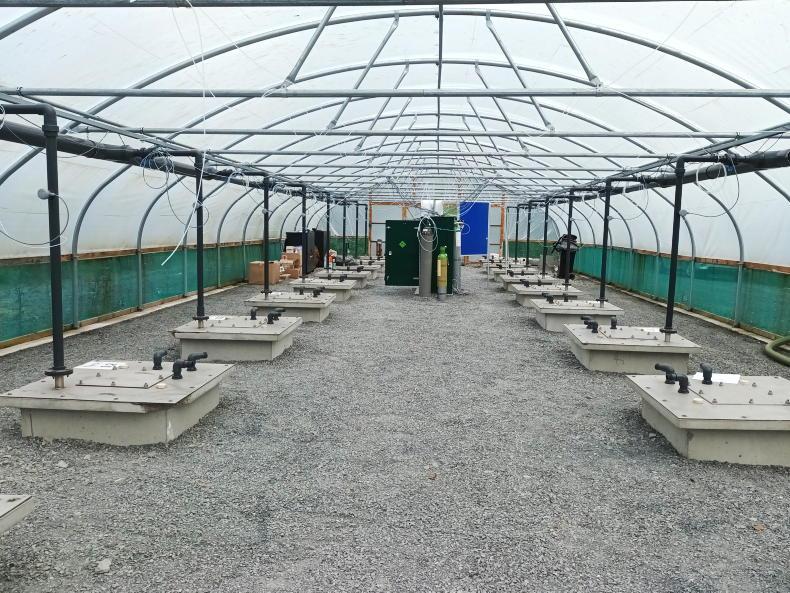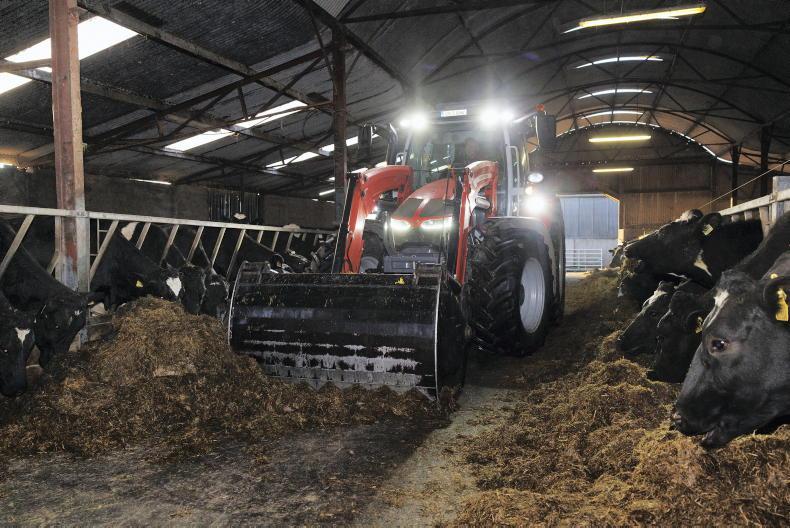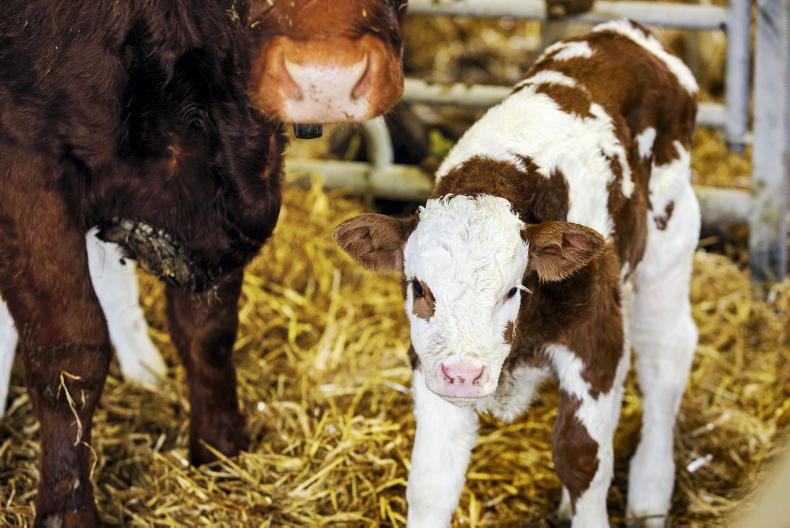Figures from CAFRE benchmarking consistently show that profitability on NI dairy farms is directly linked to the amount of milk produced from forage.
Speaking at the second of AFBI’s three on-farm dairy events, on a farm near Kinawley, Co Fermanagh, Dr Debbie McConnell from AFBI highlighted that average figures from benchmarking farms from 2000 to 2016 show that the top 25% of farms had a net margin of £556/cow. That compares with the bottom 25% of farms with a net margin of £292/cow.
Milk from forage for the top-performing farms was 3,394 litres/cow and for the bottom-performing farms, it was just 949 litres/cow. Showing a similar trend, concentrate feed rate was 0.23kg/l for the top 25% of farms and 0.39kg/litre for the bottom 25%.
However, there is only a 50-litre/cow difference in overall yield between the top- and bottom-performing farms, indicating that yield has no correlation to net profit.
“Grazed grass is the cheapest feedstuff available to farmers. On average, it costs 6p/kgDM to produce grass, 12p/kgDM to produce silage and between 25p/kgDM and 30p/kgDM to buy in concentrates. Increasing milk from forage by 1,000 litres/cow on average delivers an extra £10,800 net profit over a 100-cow herd,” McConnell said.
Covers
She maintained that central to grass utilisation is grazing grass at the three-leaf stage. Farmers were encouraged to measure grass and begin grazing covers at 3,000 to 3,300kgDM/ha and leave residual covers of 1,600 to 1,800kgDM/ha.
Good laneways, multiple entry points to paddocks, short grazing bouts and the use of back fencing were listed as ways to extend the grazing season this autumn. McConnell pointed out that well-managed autumn grass can still have metabolisable energy of 11.5MJ/kgDM.
She quoted research from AFBI which showed that autumn grass along with silage and 2kg concentrates in spring-calving cows’ diets boosted milk yields by over 2.3 litres/cow/day, compared with cows on ad-lib silage and 2kg concentrates.
Likewise, autumn-calving cows on a similar trial that received grass, silage and 6kg concentrates yielded 2.1 litres more than cows on silage and 6kg concentrates alone.
Winter
With concentrate costs making up 60% to 70% of variable costs on NI dairy farms, Dr Conrad Ferris from AFBI told farmers that carrying out silage analysis is essential for making the best use of concentrates and controlling costs this winter.
“The only way to use concentrates right is to analyse silage. If you don’t then you are essentially operating in the dark. First-cut silage over the last number of years has averaged around 10.7MJ/kgDM. This season, average first-cut ME is around 11.1MJ/kgDM, so many farmers have an opportunity to reduce concentrate costs,” he said.
However, Ferris acknowledged that wet weather has delayed some second and third cuts. This, coupled with early housing, has the potential to see fodder stocks under pressure on some farms this winter.
He recommended that farmers calculate a fodder budget now by comparing silage stocks to expected feed demand this winter.
Feed rate
Ferris also urged farmers with high-yielding herds to study individual milk composition records closely, especially for cows on high levels of concentrates. He quoted figures from a study on feed-to-yield systems, which showed that butterfat was 4.09% at a feed rate of 0.45kg/litre, but 3.81% at 0.55kg/litre.
“Farmers should make sure they know what their feeders are set at and are calibrated correctly. For cows on high levels of concentrates it may be worthwhile reducing the level of feeding and taking a hit on yield if concentrate levels are affecting milk composition and milk price,” Ferris said.
Farmers were also told that it is difficult to improve the body condition scores (BCS) of high-yielding cows in late lactation or the dry period, and that it necessary to monitor BCS the whole way through lactation.
Ferris quoted research which showed that high-yielding cows with an initial BCS of 2.25 did put on condition during an extended 13-week dry period, but this additional condition was lost within six weeks after calving, and no benefits were seen in either milk yield or composition during lactation.
Zero grazing to improve grass utilisation
The host farmer at last week’s event near Kinawley has been using a zero grazer since 2013 to increase the amount of grass utilised by his 110-cow dairy herd.
Aidan McManus has a Holstein dairy herd in a total confinement system and has been using two milking robots since December 2016.

In the winter, cows are fed silage and 2kg of blend through a diet feeder. Some silage is also fed, along with zero-grazed grass in times of high rainfall to keep dry matter intakes up.
“Ground conditions are not holding up at the moment, but we usually zero-graze from mid-April to the start of November most years. It allows better utilisation as the sward is cleaner and we can go into heavier covers, usually around 4,000kgDM/ha,” McManus said.
Last year, cows yielded 7,800 litres from two tonnes of concentrates and McManus aims to increase this to 9,000 litres from the same level of concentrates by feeding better quality forage. This would increase milk from forage from 3,356 litres last year to 4,556 litres.
He cited a fragmented farm layout, being in a high rainfall area, and with peaty soils in most areas of the farm, as the reasons for zero grazing.
Poaching
“If conditions are wet we can usually manage by taking half loads with the zero grazer and selecting drier paddocks to cut.
‘‘The tractor and zero grazer does less damage to ground than cows’ hooves out grazing,” McManus said.
The herd has a spring-calving profile, although this is changing to a 60:40 autumn: spring-calving split to make better use of the robots.
McManus said that measuring grass has allowed him to track growth and see his best performing paddocks. There has been 11.4tDM/ha of grass grown so far on the farm this year.
“We don’t do as much reseeding as we probably should. Swards are generally freshened up by stitching in grass seed when figures show that they are dropping in performance,” McManus said.
Colostrum feeding central to heifer rearing
Calves that receive inadequate colostrum after birth are three times less likely to survive to four months of age, Dr Steven Morrison from AFBI told farmers at last week’s event.
He said that feeding 10% of birth weight in colostrum (3.5 to four litres) as soon as possible after birth results in adequate immune status in 86% of calves.
Poor immune status leads to increased risk of picking up infections and Morrison quoted a study which showed that calves that develop scour are twice as likely to die within four months.
When questioned about the best method of feeding colostrum, he said that it was the volume of colostrum that was critical after birth.
“Antibodies are absorbed slightly better if colostrum is fed through a teat, as opposed to a tube. However, a teat tends to be slower and intakes can be lower. If the choice is two litres with a bottle and teat or four litres with a tube, go with four litres,” Morrison said.
He said that bacteria levels in colostrum at room temperature can double every 20 minutes and recommended feeding colostrum to calves soon after milking or else freezing it.
“Putting a high bacteria liquid into a newborn calf’s stomach is not good practice. High levels of bacteria in colostrum can also consume nutrients and prevent some immune responses,” Morrison said.
He also recommended testing colostrum regularly to ensure it is good enough quality for calves. On-farm testing can be used with a colostrumeter which gives an overview of the density of the liquid. Hydrometers and digital refractometers also offer more quantifiable methods of testing colostrum.











SHARING OPTIONS